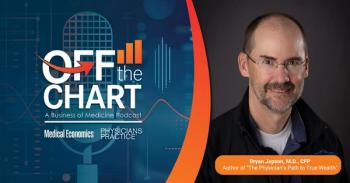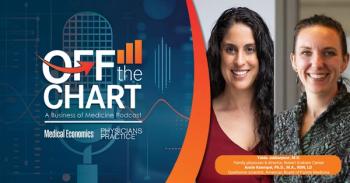
Bringing Young Docs to Independent Practice
A recent survey indicated 94 percent of final-year medical residents prefer employment over independent practice. Can this be reversed?
More and more final-year medical residents are flocking to employment.
According to a 2017
Financial Security
Most graduating physicians want to get rid of significant student loan debt, not add to it by starting a practice. According to the Merritt Hawkins' survey. Employers' loan forgiveness programs allow young clinicians to reduce debt burdens in a tax-advantaged manner, explains Tom Davis, MD, principal of St. Louis, Mo.-based Tom Davis Consulting, which provides clinician career mentoring. These organizations typically make the loan payments directly, pay the clinician additional monies to cover the tax liability and then, at the end of the employment agreement, pay off a large balance (i.e., $100,000 to $200,000) with an additional bonus to cover income taxes.
An employed position also ensures a steady paycheck, as well as benefits such as health insurance, paid time off, retirement plans, profit sharing, and typically a steady stream of patients, says Jake Serfas, lead financial strategist at O'Dell, Winkfield, Roseman, and Shipp, a financial advisory group in Washington, D.C.
"Many physicians want to focus on seeing patients and providing treatments, not running a business and dealing with the stress that comes with it," Serfas says. "Unless you have a great practice manager, for many physicians it makes the most sense to collect a paycheck and receive employee benefits without having to worry about whether the practice can afford to make payroll next month."
Startup Costs and Government Regulations
The cost to open a small internal medicine practice can easily exceed $100,000. It includes staff labor costs, paying rent or a mortgage on the medical facility, insurance (medical malpractice and health insurance), and purchasing an EHR system, furniture, equipment, and other items, says Joe Thomas, senior vice president with SunTrust Private Wealth Management's Medical Specialty Group, a financial advisory firm. Existing debt can impede a physician with little-to-no work or credit history to take on additional debt that may be needed to get a practice off the ground.
As a new physician gets a practice up and running, he will have to spend time building a patient base and addressing the business side of the practice. "Many new physicians feel overwhelmed at the thought of doing this, so they gravitate toward an employed setting," says Travis Singleton, senior vice president of Merritt Hawkins.
On top of this, dealing with governmental regulations can be daunting. "New practice owners have to know how to navigate the Medicare Access and CHIP Reauthorization Act (MACRA), the Merit-based Incentive Payment System (MIPS), and Meaningful Use criteria, and have an EHR system that is compliant per CMS," says Singleton "They will also need coding expertise because CPT codes are complex, as well as a legal team for general business purposes, such as compliance with employment regulations."
Lack of Training to Run a Practice
Not knowing how to start and operate a practice is also a deterrent. About half of residents (49 percent) in the Merritt Hawkins' survey said they didn't receive any formal instruction during their medical training regarding medical business issues such as contracts, compensation arrangements, and reimbursement methods. Furthermore, over one-third of residents (38 percent) said they felt unprepared to handle the business side of medicine.
"Over the last couple of decades, there has been a clear shift from being self-employed [or joining a small physician-owned group] to being employed by a hospital system," says Rick Kellerman, MD, professor and chair, Department of Family and Community Medicine, University of Kansas School of Medicine - Wichita. As a result, family medicine residency programs, including the program at University of Kansas, have modified their practice management curricula from "how to start your practice" to "how to review a contract."
The Ease of Getting an Employed Position
Due to a physician shortage, jobs are plentiful. In fact, more than 55 percent of primary-care residents received over 100 specific job solicitations during their residency training, the Merritt Hawkins survey reported. "We have never seen this category so high since we began conducting the survey in 1991," says Singleton.
"Highly sought-after residents can have an offer in their desired location fairly quickly, sometimes in as short as one month," says Jamie Thomas, executive vice president of recruiting, The Medicus Firm, a national physician search firm based in Dallas, Texas.
Unlike their Gen X predecessors who were more focused on how much money they could garner as physicians, today's younger physicians are more concerned about their vacation packages. "Work/life balance is an even a bigger motivator than financial compensation today," Thomas says. In a hospital-employed practice, he says physicians are more likely to work 8 a.m. to 5 p.m.
The Other Side of the Coin
Although many say that an employed position offers more work-life balance than being a practice owner, it depends upon whom you ask. Emily Briggs, MD, family physician, Briggs Family Medicine, New Braunfels, Texas, who started a private practice right out of residency, says autonomy and being able to set her own schedule was key in her decision. "When I started my practice, my children had extra-curricular activities on Wednesday afternoons. I didn't schedule office hours during that time so I could attend," she says. "If I worked for a large group or hospital, scheduling flexibility might not be available."
Thirty-five year old James Pinckney II, MD, founder and CEO of a family medicine practice, Diamond Physicians, Dallas, Texas, says he wanted control over his life as he began his career. "As an employed physician, you have production requirements; I didn't want to follow that model," he says. Like Briggs, he started his practice upon graduation. He has found that
Owning your own practice has other perks as well. "I decide how many patients I see and how to provide the best care for them," says Briggs, who has practiced for eight years. "I am in charge of office protocols, hiring, and firing. I am not subject to the actions of a non-medical administrative board when caring for patients."
Reversing the Trend
Experts say one component to getting more physicians interested in starting their own practices is education. "More needs to be taught about the business of medicine at the medical school level and through residency," Singleton says. "A top complaint among providers was that they didn't get an adequate education in this area."
However, Stratos Christianakis, MD, program director, Internal Medicine Residency, Huntington Hospital, Pasadena, Calif., says altering curriculum would be a difficult task considering the variability in regional job markets and public policy changes regarding healthcare. Plus, "adding another dimension to medical education may encroach into valuable time training residents," he adds.
Davis, who finished residency in the 1990s, points out that some residencies have been trying to incorporate business training into their curriculum for decades. "Although well intended, it is almost always inadequate, at least in part because most faculty have limited private practice experience. I only learned myself through mentoring from my former partners," he says.
Davis notes that the economic opportunities for young primary-care providers just out of training are greater and more diverse than ever before, and include direct primary care, micro practices, telehealth, and online locum tenens matching sites - which could play a role in reversing the trend.
"The 'gig economy' is hitting medicine in a big way - and with much lower overhead per opportunity than I ever enjoyed," he says. "Intentionally or not, training doesn't provide exposure to these employment alternatives. With a medical license and a reasonable business plan, banks are more than happy to advance the capital needed to finance student loan payments as individual clinicians' ramp up these low-overhead options."
Fewer regulations could also entice physicians to open their own practices. “Compliance takes time and money,” Dr. Davis says. “The fewer the regulations, the more money a physician has to work with and the more time he or she has for patient care. And the more money a physician can generate, the fewer patients they will need to see to reach their financial goals.”
The bottom line is that much of the stress physicians face today stems from payment systems that force them to take care of far too many patients. “Fewer regulations would allow physicians to take better care of fewer patients,” Dr. Davis concludes.
While there are lots of reasons why physicians aren’t pursuing independent practice nowadays, doing so still has some advantages and new practice models exist. Consider the options as you make your next career move.
Newsletter
Optimize your practice with the Physicians Practice newsletter, offering management pearls, leadership tips, and business strategies tailored for practice administrators and physicians of any specialty.














